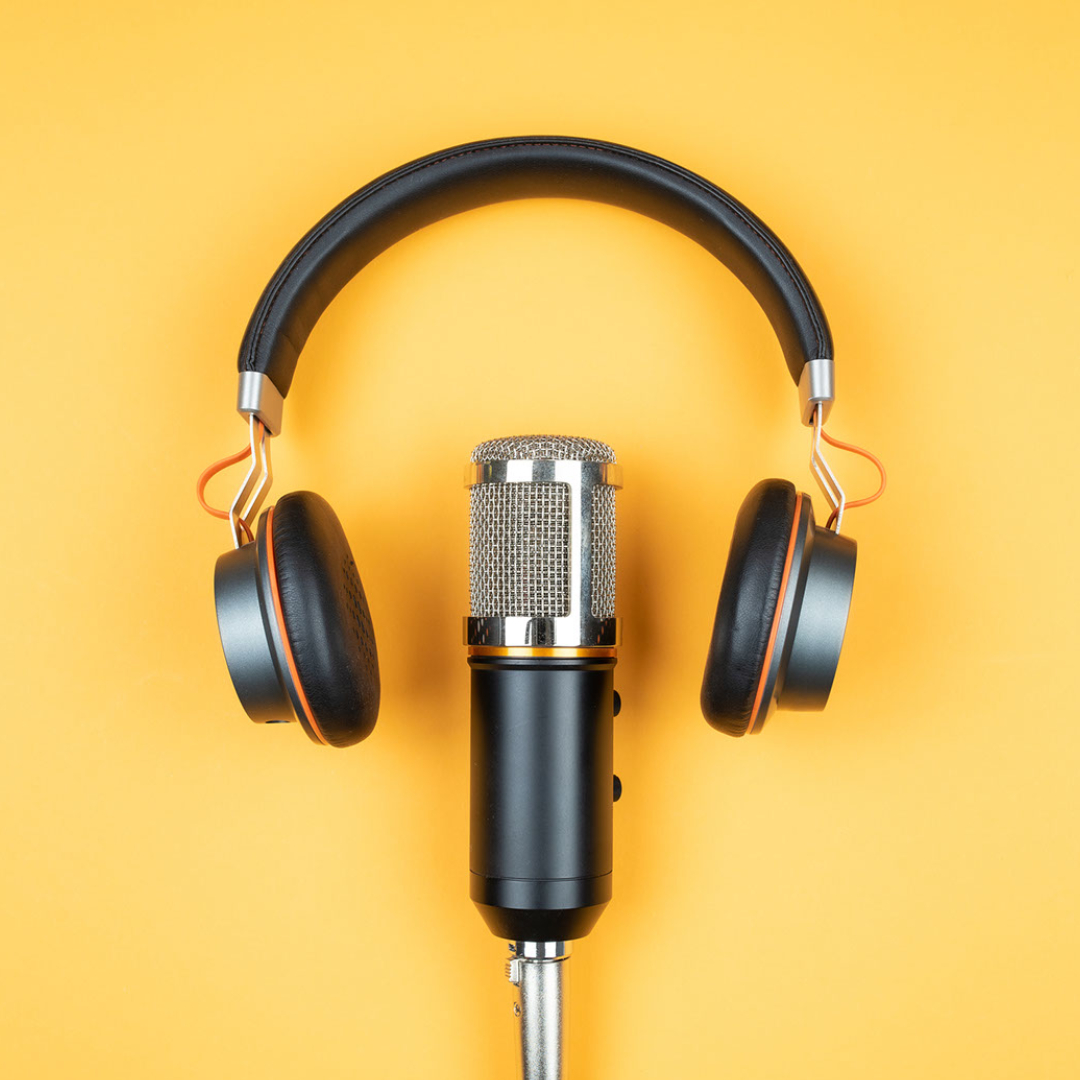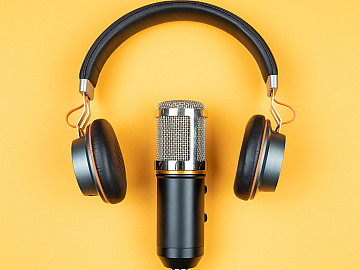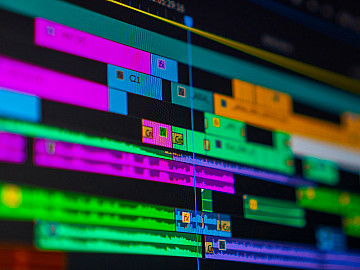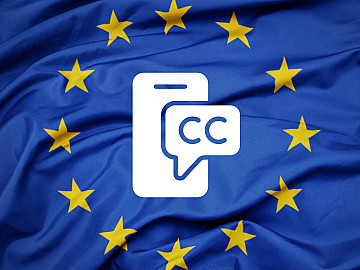With millions of podcasts on the market, your listener’s audio quality expectations are high.
We’ve all clicked on a podcast that sounds fantastic, only to be disappointed by the sound of a narrator who seems like they’re recording in a wind tunnel.
At best, poor audio quality can be frustrating. At worst, it can make us switch off.
The most frustrating part? Poor audio quality can be avoided by following a few simple tips.
“What are those simple tips, oh wise one?” – We’re glad you asked.
In this blog, Phil Caplin of Broadcast Revolution provides eight tips that he’s learned from extensive experience, covering each step of the podcast production process – from choosing equipment to editing your recording.
By following these tips, you can ensure your message doesn’t get lost in the noise.
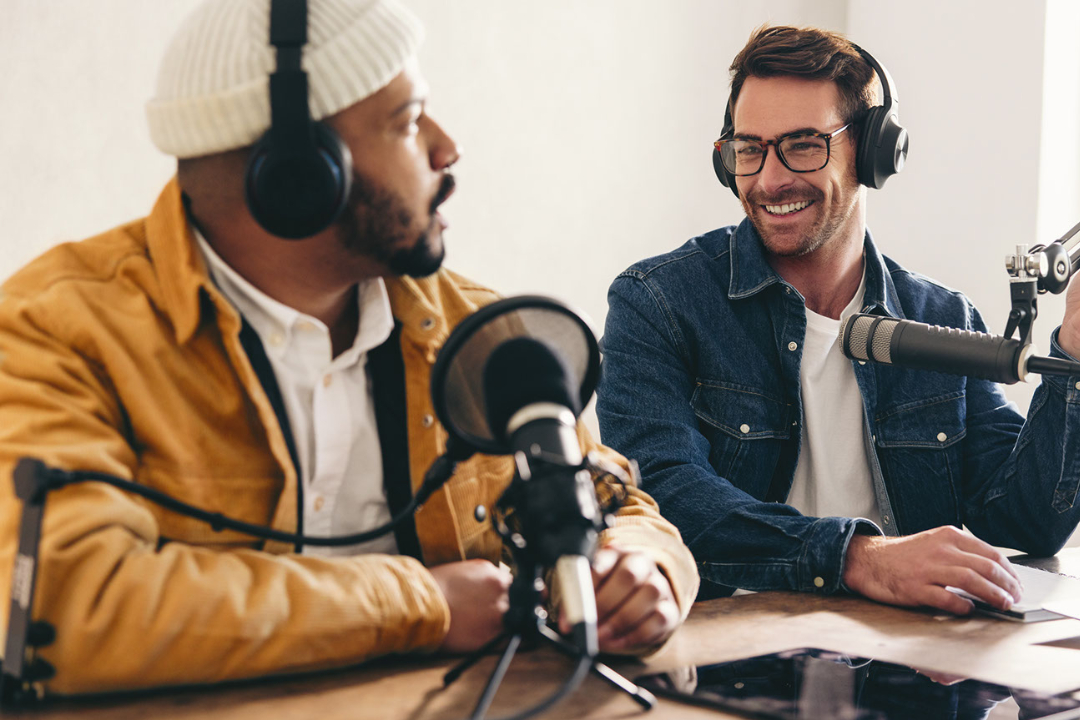
Why is Podcast Audio Quality So Important?
Are you considering recording a branded podcast to reach new audiences and increase your discoverability?
We’ll assume you’ve said yes and tell you it’s a fantastic idea!
After all, an estimated 464.7 million people listen to podcasts each year.
Podcasts can be great for business. But more often than not, the difference between a successful corporate podcast production and one that’s forgotten (or not listened to at all) lies in the intricacies of podcast audio quality. If you don’t have high-quality audio, you’re likely to fall short of your listeners’ high expectations.
Producing a podcast has the potential to create healthy ROI in terms of brand awareness and strong leads, and it’s a path many businesses have gone down. But as technology improves and becomes more accessible, as well as the number and variety of podcasts continuing to grow, the standards of your potential audience have grown too.
The fact is that unless your content is exceptionally engaging or a “homespun” feel is deliberately and carefully utilised, people are very unlikely to forgive a poor recording, and any lack of polish is likely to reflect poorly on your brand.
If you should inadvertently create a corporate podcast that is genuinely confusing and hard to hear, then audiences will simply switch it off.
It is, therefore, worth dedicating time and budget to achieving the highest production values you can, particularly making sure you have great sound. Unfortunately, producing a podcast is rarely a “build it, and they will come” scenario. Every step you take to dismantle barriers to entry will help you capture, retain and grow your audience.
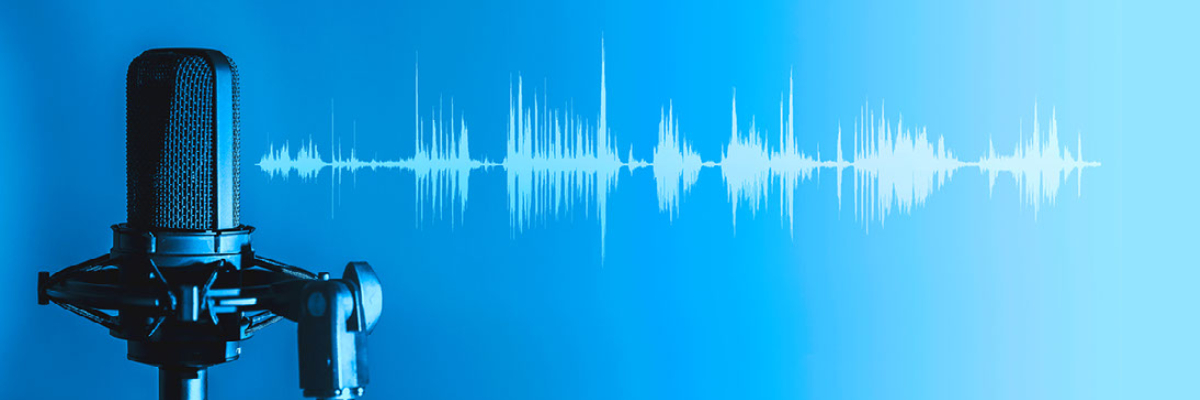
Getting the Sound of Your Podcast Right
Video and recording technology has undergone a revolution in the last two decades, with quality improving exponentially. Many of us carry devices in our pockets which can capture sharper images than used to be broadcast to millions of people, and amateur musicians can now enjoy better audio equipment at home than some of the world’s most famous albums were originally recorded on.
Professional equipment has gone down in price as newer products hit the market, making high-end technology an attainable purchase for many. However, capturing great sound on a podcast still isn’t easy, and it’s something that brand stakeholders will have to think about carefully to get right.
What can you do to get it right?
We’re glad you asked. Here are our eight tips to achieve great audio in your podcast.
1: Research and Buy the Best Equipment You can
There are a few pieces of equipment you need to get started when recording a podcast, which includes items such as noise-cancelling headphones, a pop filter, a mixer, recording and editing software, and most importantly, an XLR or USB microphone.
Setting out with good equipment (which needn’t break the bank) means that you won’t fall at the first hurdle, but there is a huge variety of products, and some may be more suited to your purposes than others. This is why it’s important to do your research before buying anything, whether that’s asking for guidance on dedicated forums or accessing the wealth of freely available information on platforms like YouTube.
2: Choose a Suitable Recording Space
Hard surfaces tend to reflect and bounce sound around, so you should choose a fairly roomy (but not cavernous) carpeted space with lots of soft furnishings that will help to reduce reverb. If it’s possible to hang blankets across the walls, that will also help you to achieve a better sound, and you should take every opportunity to reduce outside noise.
Did you know that Voquent offer consultations? Discover how to build a home studio and more!
This includes making the room a pet-and-children-free zone, closing doors and windows, and turning off all machinery except your recording equipment. If you are near a busy road, consider recording later in the evening or very early in the morning to miss the traffic.

3: Take a Test Recording
Many podcasters, even those belonging to a podcast agency, have found themselves in the regrettable situation of having to bin a whole recording and start again simply because audio problems have been missed on the day. Taking a test recording or two before getting into the meat of your show can help you identify issues that may have taken hours of editing or re-recording to resolve, whether that’s a mysterious buzz from a distant television or the whirr of a computer fan.
4: Capture a Noise Profile
While the aim should always be to achieve the best audio you can prior to post-production, podcast editing is an important part of the process. By creating a short audio sample of a silent room, you can input this data into your editing software so it learns what to remove from the rest of your recording.
If audio editing isn’t within your skillset, an easy and quick solution would be to use an AI audio enhancer. These are online web tools to improve the overall audio quality. It can remove noise, clean up your speech, and adjust levels without hours of editing – pure convenience.
5: Position Microphones Effectively
Whether it’s unintended sighs, muttered asides, ‘plosives’ (the gusts of air that hit the microphone on “p” and “b” sounds) or just the sound of someone breathing, you don’t necessarily want every noise your guests or presenter makes to feature in the final recording. While a lot can be fixed in post-production, you can make your life a lot easier by correctly positioning microphones and making the effort to mute people who aren’t speaking during the recording.
Discover more tips for the perfect microphone placement on the Voquent blog
Guests and presenters can also help with this by trying to avoid fidgeting as they speak. While a little “ambient noise” isn’t always a bad thing, depending on the effect you are trying to achieve, rustling papers or tapping pens could detract from the final product.
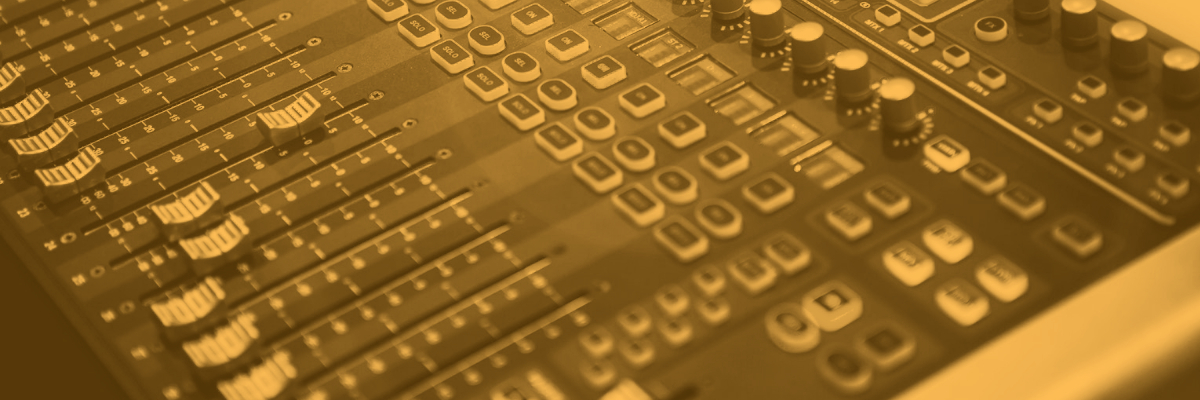
6: Record in a High-Resolution Audio File
To help in the edit and create a natural sound, it is advised that you record your audio in at least a 24-bit / 48 kHz WAV or AIFF file. Various techy considerations are at play in this decision, including how the file will be compressed and processed during editing.
7: Monitor Recordings and Mark Mistakes
Everyone makes mistakes, and some stumbles and trips are expected in an audio recording. One handy trick is to create an audio cue, so these mistakes are easy to find later on. For instance, blowing a whistle will create a volume spike that’s easy to see in editing software, allowing you to jump to that moment with ease rather than trying to locate it within potentially hours’ worth of recordings.
Keeping an eye on volume is also a good way to modulate your (or your presenter’s) voices. Recording tools generally display volume levels as green, yellow and red, and while yellow is good for moments of emphasis, you generally want to stick within green and entirely avoid red. This avoids jarring and unpleasant moments of noise for listeners.
Another means of self-regulation during the recording process is to ensure everyone on the show is wearing headphones. This will allow guests and presenters to hear themselves as the audience will hear them and adjust their voices accordingly.
8: Build on your Performance and Experience
While plenty of research and preparation can help to cut down the learning phase of becoming a podcaster, you will gain the most knowledge and experience simply by doing and learning on the job. As time goes on, you will make mistakes and learn how to fix them, growing your confidence and skills until podcast production is second nature.
Creating corporate podcasts is an incredible way to get your brand noticed. By allowing your consumers to access your business through something as human as the voice, your brand will build trust and increase engagement.
Both audio quality and sonic branding are key elements to making your corporate podcast a success – Production quality goes a long way in bringing your listeners back for more.
Discover Voices for Podcast Projects
Sometimes we include links to online retail stores such as Amazon. As an Amazon Associate, if you click on a link and make a
purchase, we may receive a small commission at no additional cost to you.

